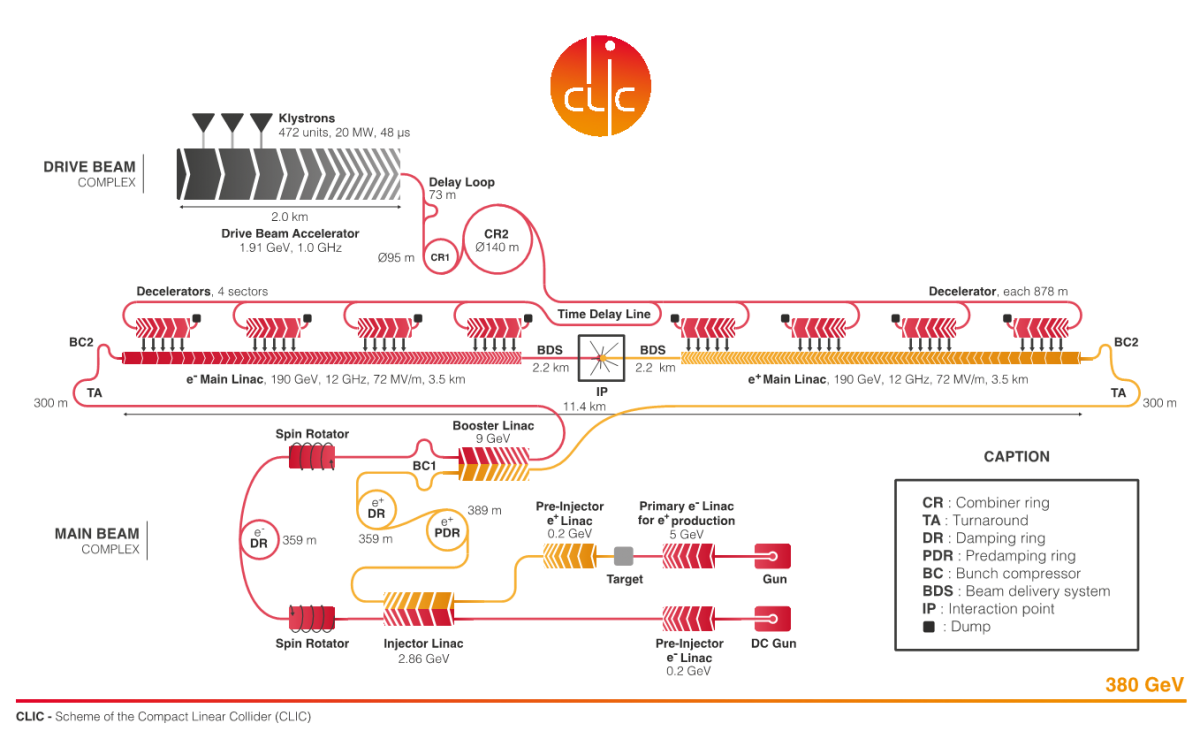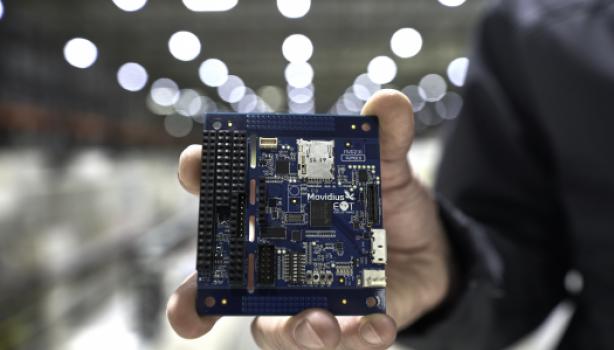Figure 1: the CLIC collaboration in January 2019. (Image: M Volpi)
The physics opportunities brought by of a high-luminosity linear electron-positron collider
The annual Compact Linear Collider (CLIC) workshop brings together the full CLIC community, this year attracting more than 200 participants to CERN on 21-25 January 2019. The workshop covered accelerator and detector R&D, as well as detailed studies of the physics opportunities at a high-luminosity linear electron-positron collider. The programme also included civil engineering aspects, infrastructure studies, industrial involvement, and technology spin-off activities.
CLIC occupies a unique position in both the precision and energy frontiers, combining the benefits of electron-positron collisions with the possibility of multi-TeV collision energies. The CLIC project covers the design and parameters for a collider built and operated in three stages, from 380 GeV to 3 TeV, with a diverse physics programme spanning 30 years. CLIC uses an innovative two-beam acceleration scheme, in which high-gradient X-band accelerating structures are powered via a high-current drive beam, thereby reducing the size and cost of the accelerator complex significantly.

Figure 2: The main electron beam is produced in a conventional radio frequency (RF) injector, which allows polarisation and is accelerated to 2.86 GeV. The beam emittance is then reduced in a damping ring. To produce the positron beam, an electron beam is accelerated to 5 GeV and sent into a crystal target to produce energetic photons, which hit a second target and produce electron-positron pairs. The positrons are captured and accelerated to 2.86 GeV. Their beam emittance is reduced in a series of damping rings. In the final injection step, a booster linac system accelerates both beams to 9 GeV, the bunch length is compressed, and the beams are delivered to the main linacs where they are accelerated to 190 GeV, using a unique and innovative two-beam accelerating scheme featuring 12 GHz X-band accelerating structures that reach accelerating gradients of 100 MV/m. The beam delivery system removes transverse tails and off-energy particles with collimators, and compresses the beam to the small size required at the interaction point (IP). After collision, the beams are transported by the post collision lines to their respective beam dumps. (Image: CLIC/CERN)
In Wednesday’s open plenary session, Steinar Stapnes, the CLIC project leader at CERN, reported that the key CLIC concepts, such as drive beam production, operation of high-efficiency radio-frequency cavities, and other enabling technologies, had all been successfully demonstrated. The afternoon session also included detailed presentations on the accelerator and detector status, and of the CLIC physics potential, including key motivations for an electron-positron collider that can be extended to multi-TeV energies.
“The CLIC project offers a cost-effective and innovative technology and is ready to proceed towards construction with a Technical Design Report. Following the technology-driven timeline, CLIC would realise electron-positron collisions at 380 GeV as soon as 2035,” says Stapnes.
A major focus in 2018 was the completion of a Project Implementation Plan (PiP), as well as several comprehensive Yellow Reports describing the CLIC accelerator, detector, and detailed physics studies. These reports were further distilled into the two formal input documents, submitted to the European Strategy for Particle Physics Update 2018 - 2020 (ESPP), which can be found at: https://clic.cern/european-strategy
A central point of the workshop was an updated cost and power estimate, which for the first stage amount to around 5.9 billion CHF and 168 MW, respectively. The energy upgrade to 1.5 TeV adds a cost of approximately 5.1 billion CHF, including an upgrade of the drive-beam radiofrequency power. Further, the energy upgrade to 3 TeV would add approximately 7.3 billion CHF, including the construction of a second drive-beam complex. With the proposed staged approach these costs can be distributed over two or three decades.
Looking to the future, the workshop also discussed the next important step for the CLIC project: an initial five-year preparation phase focusing on further design, technical and industrial developments, with a focus on cost, power and risk reduction. Civil engineering aspects and infrastructure preparation, including site authorisation, will become increasingly detailed during the preparation phase. At the same time, system verifications will be made in dedicated CLIC prototype setups, as well as in other facilities, which have similar high-power radiofrequency linac systems and low emittance beams. These include normal-conducting Free Electron Laser (FEL) linacs and compact photon sources such as those based on Inverse Compton Scattering.
These facilities will provide powerful demonstrations and new benchmarks for reliability, technical parameters, simulation and modelling tools. The goal is to produce a Technical Design Report (TDR), enabling the start of construction for the first CLIC stage by 2026.
The technology-driven schedule is shown in Figure 2, showing the construction and commissioning period and the three stages for data taking, including the corresponding goal for integrated luminosity. The schedule for construction and installation shows that the CLIC project can be implemented well in time for first collisions in 2035, which would allow the exploration of Higgs physics at CLIC immediately after the end of the high-luminosity LHC programme.
2018 saw several significant achievements, including extensive X-band structure development and testing at CERN and in collaborating institutes; further developments of high-efficiency radiofrequency systems; overall system verification studies in CERN Linear Electron Accelerator for Research (CLEAR), Accelerator Test Facility (ATF2) at KEK, free-electron lasers and low emittance rings; comprehensive civil engineering and infrastructure studies; and numerous technical developments, optimising the most critical and cost/power-driving components of the CLIC accelerator.
In parallel, a systematic overview of potential industrial involvement in the CLIC core technologies is being compiled. Several agreements with collaboration partners support technical developments for smaller X-band based accelerators and elements with similar parameters. These include the CompactLight European Commission Design Study for an X-band based free-electron laser design, and the recently proposed eSPS project that aims to study dark sector physics with an Super Proton Synchrotron (SPS)-based primary electron beam facility at CERN, comprising a compact X-band electron injector linac using CLIC technology. These efforts, and many others, were highlighted throughout the week and the subject of a dedicated session on applications of high-gradient X-band technology and of advanced uses of electron beams.
The workshop also discussed interesting developments in plasma- and dielectric-based acceleration. The laser straight linear tunnel of CLIC can provide a natural infrastructure for long-term future projects that might use such novel acceleration techniques.
In the CLIC detector R&D session focusing on silicon pixel technologies, several new and refined test-beam analysis and simulation results were presented. These results enabled the design of two new monolithic detector technology demonstrators targeting the challenging vertex and tracker requirements at CLIC. Final design features for both chips, as well as plans for future tests, were presented and discussed. Many of these tests will take place at the test-beam facilities of DESY in Hamburg, where the CLICdp vertex and tracker group will be welcomed for several weeks during the second planned long shutdown of CERN’s accelerators in 2019/20.
The workshop heard reports on recent developments for Standard Model precision tests in the Higgs boson and top-quark sector, as well as on the broad sensitivity to effects from physics beyond the Standard Model. Updates were presented on benchmark scenarios with challenging signatures such as boosted top quarks and Higgs bosons, numerously produced at the higher-energy stages of CLIC. Further, the Higgs self-coupling, which determines the shape of the Higgs potential, can be directly accessed at the multi-TeV collisions at CLIC through the measurement of double Higgs production. This measurement benefits from the excellent jet resolution and flavour tagging capabilities of the CLIC detector as well as the clean collision environment in electron-positron collisions. The workshop reported projections of the Higgs self-coupling, in a full simulation study, reaching a precision of 10%, an accuracy that is preserved in a global fit of the full Higgs programme of CLIC.
The CLIC physics programme continues to attract interest from the theory community. A series of talks in a dedicated mini-workshop, joint between theorists and experimentalists, reported on the CLIC potential to extend our knowledge of physics beyond the Standard Model. New results were presented showing the CLIC potential to probe the possible composite nature of the Higgs boson at the scale of tens of TeVs, to discover dark matter candidates such as the thermal Higgsino, and to study axion-like particles in a unique mass range. It was also shown how searching for neutral scalar particles coupled through the Higgs will allow CLIC to explore models relating to the nature of the Electroweak Phase Transition and with non-minimal supersymmetric models addressing the Naturalness Problem. The workshop also saw discussions of first studies of stub-tracks and long-lived particles searches, a domain in which CLIC has promising potential for future exploration.
There is widespread support for a lepton collider for high-precision Higgs boson and top-quark physics. CLIC is a mature contender that, in addition, can be extended to multi-TeV collisions, providing unique sensitivity to physics beyond the Standard Model.
Further reading:
- https://clic.cern/european-strategy
- CLIC 2018 Summary Report (CERN-2018-005-M)
- CLIC Project Implementation Plan (CERN-2018-010-M)
- The CLIC Potential for New Physics (CERN-2018-009-M)


